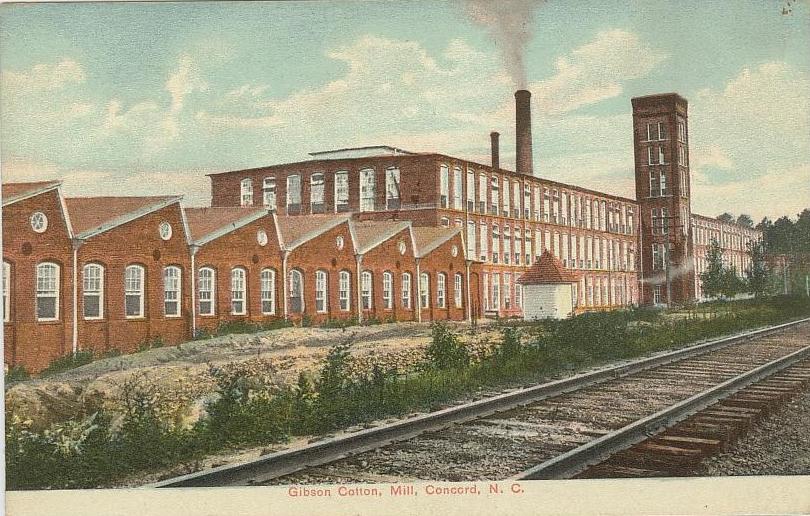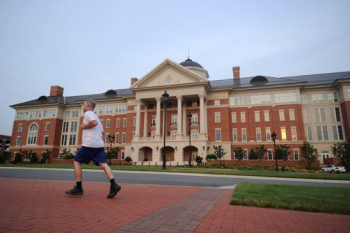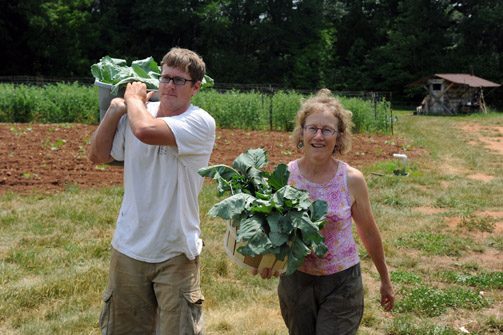Cabarrus County: An introduction

Introduction: While never the region’s most populous county, Cabarrus has nonetheless featured prominently in the history of some of the region’s most important economic trends. The discovery of gold near Midland in 1799 established the Charlotte region as the center of America’s first gold rush, while the emergence of Cannon Mills and the company town of Kannapolis represented the most visible example of the region’s growing prominence in the southern textile industry during the early 20th century. The growth of the Charlotte Motor Speedway near Concord attracted a critical mass of racing teams and supporting businesses that made the Charlotte region the heart of NASCAR and one of America’s major centers for motorsports. And as Charlotte’s population exploded during the last few decades, Cabarrus County became the region’s poster child for rapid suburban growth, with both its benefits and costs. Today, Cabarrus once again finds itself in a leadership role concerning the future direction of the Charlotte region, from an ambitious effort to transform a former textile town into a globally-respected center for biotech research, to the adoption of cutting-edge growth management tools aimed at reigning in some of the negative side-effects of unbridled growth.
Historical overview: An excerpt from A Guide to the Historic Architecture of Piedmont North Carolina (UNC Press), Catherine Bishir and Michael T. Southern. (p. 491)
 “The county was formed in 1792 from northeastern Mecklenburg Co. and named for Stephen Cabarrus of Edenton, Speaker of the House of Commons. Drained by the Rocky River and its tributaries, it was settled in the mid -18th c. by Germans in the east and Scotch-Irish in the west –two principal north-south creeks are Dutch Buffalo (“Deutsch”) and Irish Buffalo. A few Welsh and English settled in the center. A mixed agricultural economy was enriched by gold mining after the nation’s first discover of gold in 1799 (Reed Gold Mine); the precious metal was extracted through the 19th c. Textile mills erected in the late 19th and early 20th centuries made Cabarrus Co. of of the state’s leading producers, with the new town of Kannapolis the state’s largest one-company town. The eastern and southern sections of the county retain a rural character, while commercial and industrial development flanks the I-85 corridor in the west.”
“The county was formed in 1792 from northeastern Mecklenburg Co. and named for Stephen Cabarrus of Edenton, Speaker of the House of Commons. Drained by the Rocky River and its tributaries, it was settled in the mid -18th c. by Germans in the east and Scotch-Irish in the west –two principal north-south creeks are Dutch Buffalo (“Deutsch”) and Irish Buffalo. A few Welsh and English settled in the center. A mixed agricultural economy was enriched by gold mining after the nation’s first discover of gold in 1799 (Reed Gold Mine); the precious metal was extracted through the 19th c. Textile mills erected in the late 19th and early 20th centuries made Cabarrus Co. of of the state’s leading producers, with the new town of Kannapolis the state’s largest one-company town. The eastern and southern sections of the county retain a rural character, while commercial and industrial development flanks the I-85 corridor in the west.”
Cabarrus today: Cabarrus County is in many ways a study in contrasts. The western part of the county around Concord is characterized by suburban sprawl and rapid population growth, while the eastern half near Mount Pleasant retains a rural landscape and an agricultural-based economy. In 2003, the county experienced the largest single-day layoffs in North Carolina’s history with the closing of the Pillowtex plant in Kannapolis (followed soon thereafter by the announced closing of the Philip Morris plant in Concord), and yet nonetheless maintained one of the lowest unemployment rates in the region in the ensuing years. During the past two decades, the county became known throughout the Charlotte region for trying to encourage growth by providing incentives for the development of the Interstate 85 corridor near the Mecklenburg County line (most notably for the Concord Mills commercial area close to the speedway), but it was also a regional pioneer in planning circles for its use of an adequate public facilities ordinance and an urban growth boundary to manage some of the negative consequences of the county’s rapid growth. While the county aspires to become home to some of the world’s most prominent agri-business companies with the NC Research Campus under development in Kannapolis, it has also emerged as one of the region’s most innovative counties in trying to nurture a small-scale local foods economy, including an “agriculture incubator” near Concord.

What these seemingly contradictory realities suggest is that Cabarrus County, much as it has in the past, continues to be an experimental place where responses to the region’s occasional economic transition are tested, providing a model for other counties in the region to follow or disregard. Whether this is a coincidence, or the result of the county’s historic location between the region’s two more prominent centers (Salisbury during the 19th century and Charlotte during the 20th century) is unclear. The argument could certainly be made that, like a child in the shadow of an older sibling, Cabarrus has always been willing to embrace change and the opportunities it brings as a way to stand out in the crowd. Whatever the reason, the county is typical of high-growth counties on the edge of booming metropolitan areas with its juxtaposition of the new and the old, innovation and tradition.
The county’s historic embrace of change has usually been used in furtherance of growth, but some of the county’s more recent examples of policy innovation have instead been in response to growth and its unintended consequences. Cabarrus was one of the first counties in the region to adopt an adequate public facilities ordinance as a way of tying new development to the county’s ability to pay for public services, such as schools. While such ordinances have recently come under attack in North Carolina based on questions of statutory authority, the county’s willingness to enact such an ordinance after years of pro-growth sentiment nonetheless represented a major shift in public policy. Cabarrus’ creation of an urban growth boundary limiting the expansion of growth-inducing infrastructure into the eastern part of the county (coupled with the down-zoning of land in that area) was a first for the Charlotte region, and was further evidence of the county’s commitment to balancing growth with fiscal responsibility and concern for open space.

To interpret such initiatives as a repudiation of the county’s pro-growth tradition would be a mistake, however. Cabarrus leaders understand that the county is in an enviable position to benefit from the region’s growth, given its proximity to Charlotte and its location along Interstate 85. Massive job losses associated with the Pillowtex and Philip Morris plant closings were a reminder of the importance of economic diversification (hence the enthusiasm for the biotech initiative in Kannapolis), while the county’s dramatic growth in residential development of recent decades has raised concerns about the loss of suitable land for sustaining an industrial tax base. Even with the county’s efforts to preserve more open space for farmland, there has been an intentional endeavor to link such efforts to the strengthening of agriculture as an economically viable activity, with a county-sponsored agricultural incubator aimed at helping “entrepreneurial farmers” get started in the Charlotte region’s growing local foods movement.
Cabarrus’ success or failure in finding a balance between growth, fiscal responsibility and environmental stewardship will serve as a lesson for how the region’s other suburban counties address growth management issues in the years ahead. Depending on the outcome, Cabarrus County may once again prove to be a bellwether for the future economic complexion of the Charlotte region. — Jeff Michael
Top photo courtesy of Charlotte Motor Speedway. Historic Photo courtesy of Historic Cabarrus Association, Inc. Other photos by Nancy Pierce.
Cabarrus County links
Cabarrus County Articles & Publications







